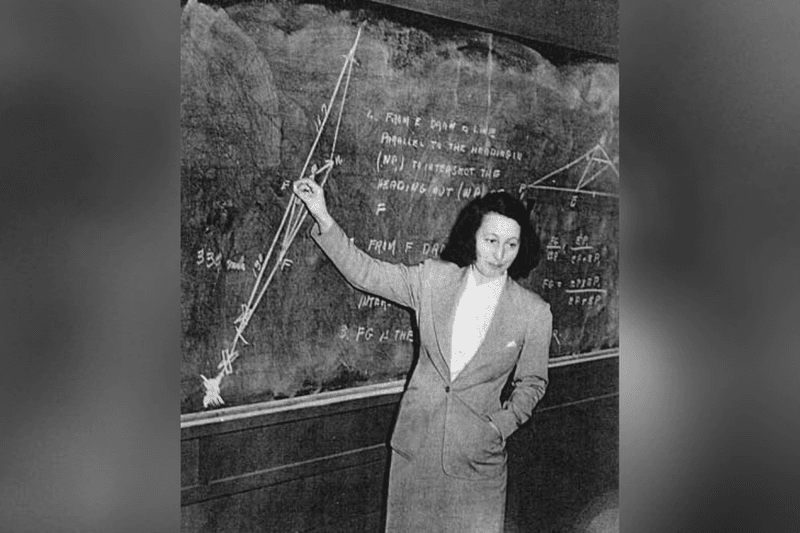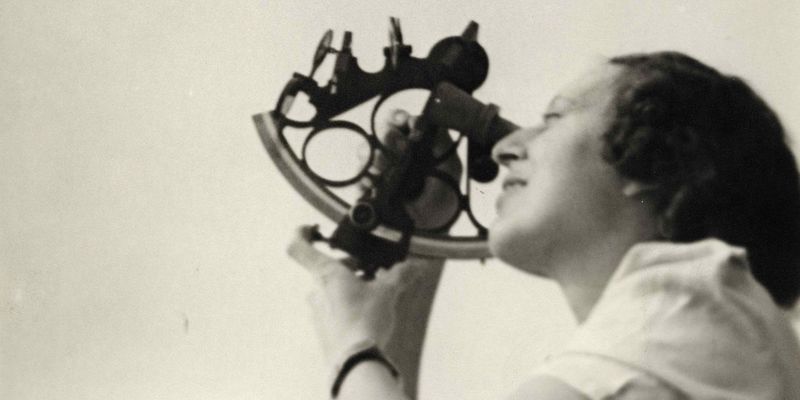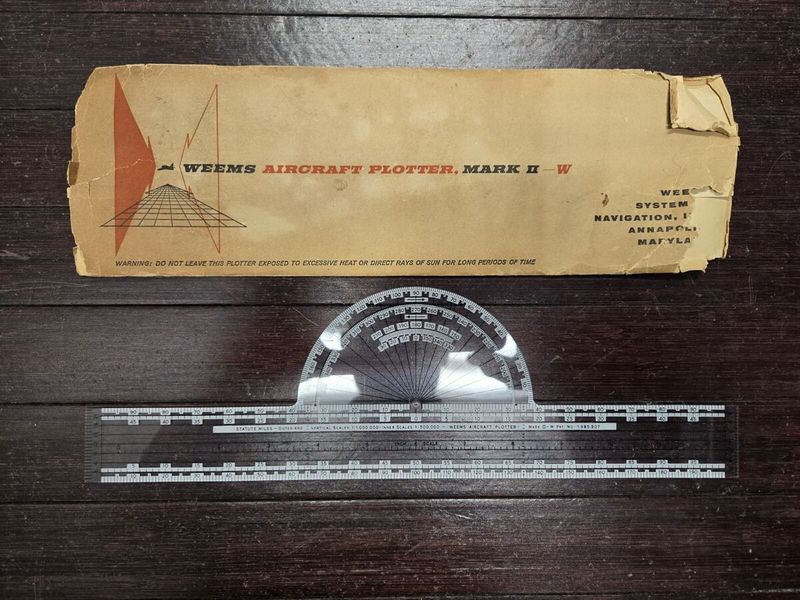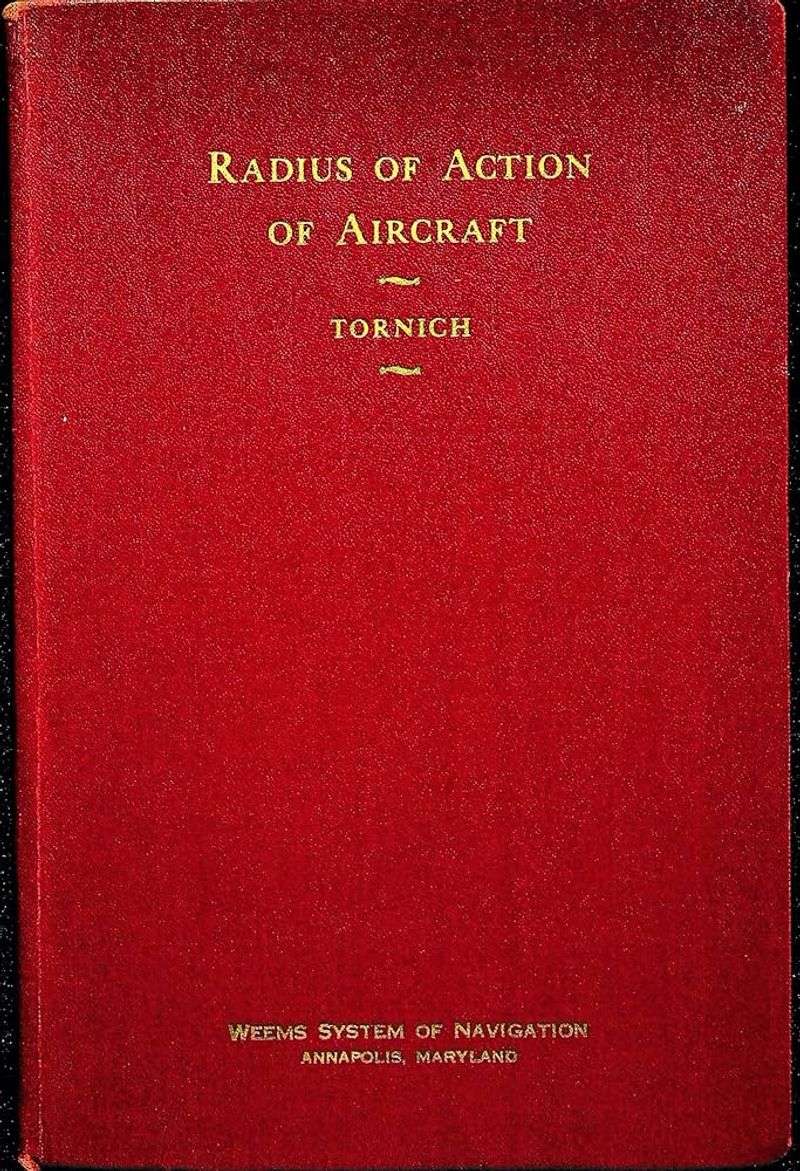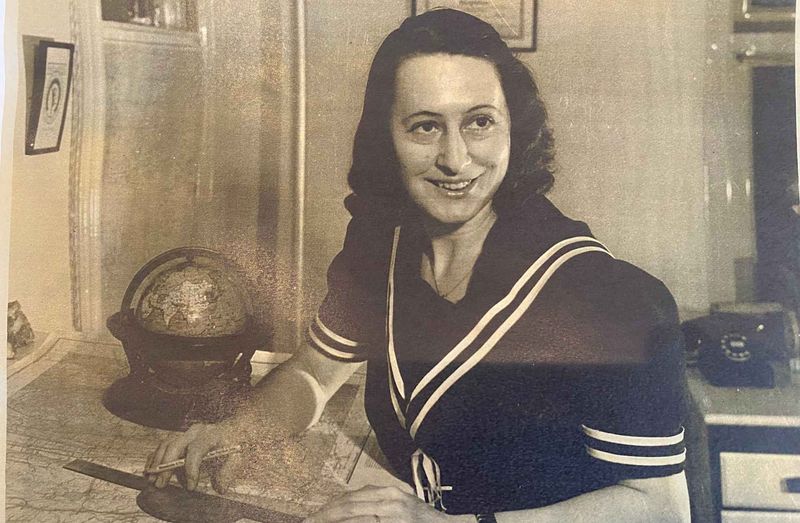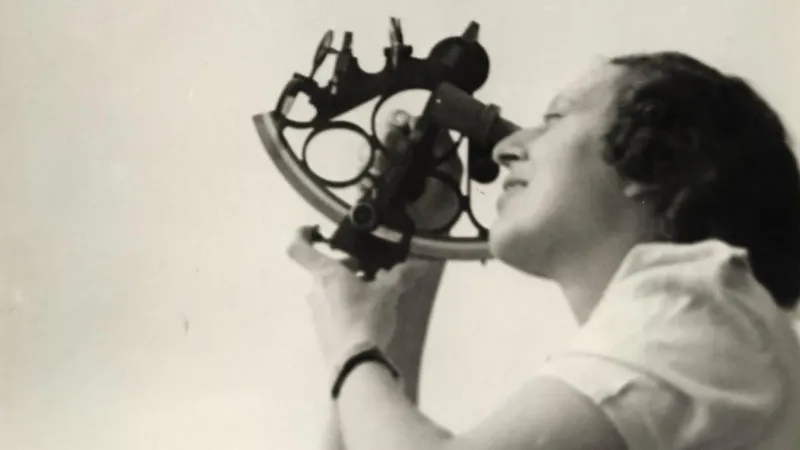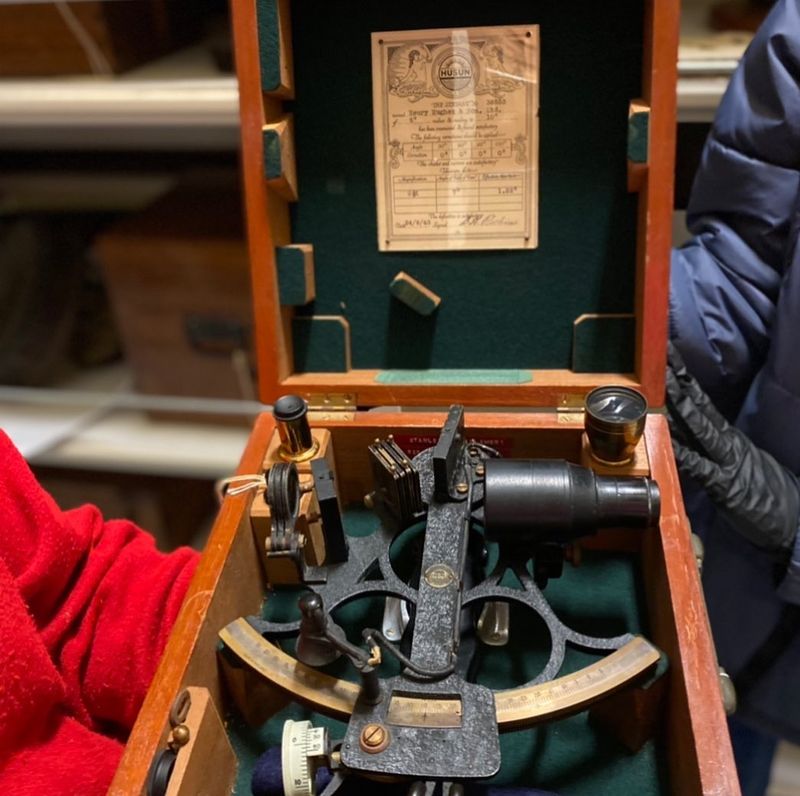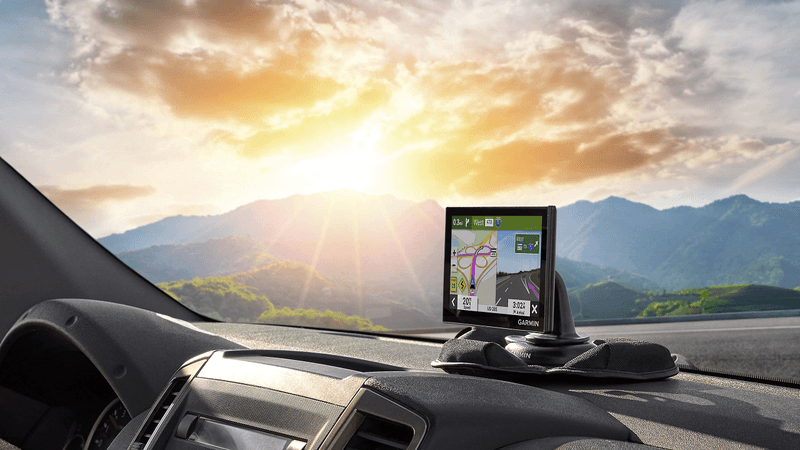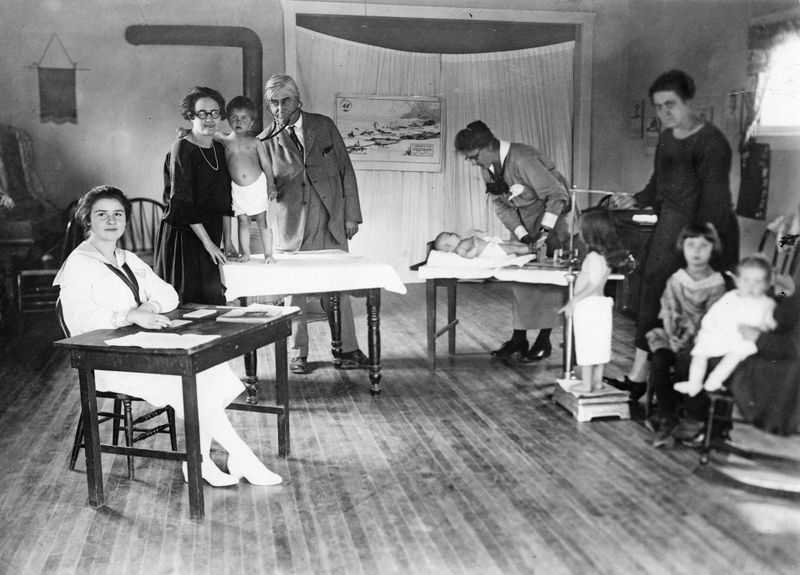Mary Tornich Janislawski revolutionized navigation during a time when women rarely held technical roles. Her expertise in celestial navigation became critical during World War II, saving countless lives through improved accuracy in air and sea travel. From training military pilots to developing tools used in space exploration, Janislawski’s contributions transformed how we navigate our world.
1. Navigation Teacher to Thousands
During the chaos of World War II, over 4,000 military cadets learned the art of finding their way through the skies from Mary Janislawski. Her classrooms spanned multiple locations including the U.S. Army Air Corps Base in King City, Palo Alto Airport, and Naval Air Station Alameda.
Her teaching style made the complex science of celestial navigation accessible even under wartime pressure. Many pilots credited their survival to her thorough instruction.
Without GPS or modern technology, these pilots relied on stars and mathematical calculations Janislawski taught them to navigate safely across oceans and through enemy territory.
2. Trailblazer for Women in the Navy
At Alameda Naval Air Station, Janislawski broke gender barriers by training women in the WAVES program. These female recruits learned celestial navigation inside flight simulators under her expert guidance.
The Women Accepted for Voluntary Emergency Service represented a revolutionary step for female participation in the military. Janislawski’s role proved particularly significant as she transferred technical knowledge typically reserved for men.
Her female students often faced skepticism about their capabilities, yet Janislawski’s confidence in them helped establish women as valuable contributors to wartime navigation efforts.
3. Creator of Life-Saving Navigation Tools
Innovation flowed naturally from Janislawski’s brilliant mind, culminating in her development of the Mark II Plotter. This clever device revolutionized how pilots determined their position during flights.
Before her invention, navigation errors could mean the difference between life and death for aircrews. The Mark II Plotter dramatically improved accuracy, allowing pilots to plot courses with greater confidence even in challenging conditions.
Military officials quickly recognized the value of her creation, making it standard equipment for many wartime missions. Countless successful bombing runs and reconnaissance flights owed their precision to this remarkable tool.
4. Author of Essential Aviation Manual
The year 1940 saw Janislawski publish “Radius of Action of Aircraft,” a technical manual that became the bible for wartime aviators. Her clear writing style made complex navigation concepts accessible to pilots who desperately needed this knowledge.
Each page contained practical instructions that pilots could apply immediately in combat situations. The manual covered critical calculations for determining how far aircraft could travel before needing to return to base.
Military instructors incorporated her work into training programs across the country. Her publication demonstrated not only her technical expertise but also her gift for communicating difficult concepts.
5. Pioneer in a Male-Dominated Field
Shattering glass ceilings came naturally to Janislawski when she became the first female associate of Weems System of Navigation, Inc. Her acceptance into this prestigious worldwide organization spoke volumes about her exceptional abilities.
Commander Philip Van Horn Weems, the founder, recognized her talent despite the prevailing gender biases of the era. This association connected her with the foremost navigation experts globally during a critical period in aviation history.
Male colleagues initially viewed her with skepticism, but her technical mastery quickly earned their respect. Her association with Weems elevated her standing and amplified her influence on navigation practices.
6. Academic Navigation Authority
Elite universities recognized Janislawski’s extraordinary knowledge by inviting her to teach as an adjunct professor. Students at U.C. Berkeley, Stanford, and the Polytechnic College of Engineering in Oakland benefited from her expertise in Weems’ nautical and aerial navigation methods.
Her university lectures bridged the gap between theoretical navigation principles and practical applications. Engineering students particularly valued her real-world perspective gained from training military personnel.
Faculty colleagues marveled at her ability to explain complex mathematical concepts in accessible ways. Her academic contributions helped establish navigation as a serious scientific discipline worthy of university study.
7. Mentor to Famous Aviators
Fred Noonan, who would later gain historical significance as Amelia Earhart’s navigator on her final flight, counted himself among Janislawski’s distinguished students. This connection highlights how her influence touched even the most prominent figures in aviation history.
Her teaching methods prepared navigators for the extreme challenges of transoceanic flight. Noonan applied her techniques during his work with Pan American Airways and later during Earhart’s attempted world flight.
Other notable aviators sought her guidance before attempting record-breaking journeys. Her reputation for thorough training made her the instructor of choice for those undertaking the most dangerous aerial missions.
8. Nationally Acclaimed Navigation Expert
Recognition came from America’s newspaper of record when The New York Times declared Janislawski the nation’s “most outstanding woman teacher of aerial navigation” in 1940. This prestigious acknowledgment cemented her reputation at a pivotal moment in aviation history.
The Times article highlighted her exceptional ability to transform complex celestial concepts into practical skills for pilots. Such national recognition was exceedingly rare for women in technical fields during this era.
Military officials took notice of the Times coverage, leading to expanded opportunities for her to influence navigation training nationwide. Her methods gained credibility that helped standardize navigation practices across various branches of service.
9. From World War to Space Race
Janislawski’s brilliance transcended Earth’s atmosphere when she developed a lunar grid system for Apollo astronauts. Her wartime navigation expertise found new purpose in helping humans explore the Moon’s surface.
NASA engineers collaborated with her to adapt celestial navigation principles for lunar conditions. The grid system she created provided astronauts with reliable positioning references in an environment without traditional landmarks.
Her ability to connect wartime navigation challenges with space exploration demonstrated remarkable intellectual flexibility. Few navigation experts successfully bridged these two historical eras, making her contributions to both particularly significant.
10. Groundbreaking Award Recipient
History was made in 1972 when Janislawski became the first woman ever to receive theFred Noonan. This prestigious honor recognized her lifetime of contributions to the field.
The award ceremony highlighted her wartime service and subsequent innovations in navigation technology. Male colleagues who had once questioned a woman’s place in navigation now stood to applaud her achievements.
Her acceptance speech emphasized the importance of precise navigation in both military and civilian applications. This recognition helped pave the way for future generations of women in navigation sciences.
11. Posthumous Recognition of Excellence
After her passing in 1998, the navigation community honored Janislawski by naming her the first female Fellow of the Institute of Navigation. This posthumous recognition acknowledged her pioneering status and lasting influence on the field.
The fellowship represents the highest honor bestowed by the Institute, reserved for those who have made extraordinary contributions. Her selection broke another barrier for women in a field that had long been dominated by men.
Navigation historians note that this recognition helped correct the historical underrepresentation of women’s contributions to the science. Her fellowship status ensures her place among the most significant figures in navigation history.
12. Foundation for Modern GPS
Every time you use GPS navigation, you’re benefiting from principles Janislawski helped establish. Her groundwork in precise positioning calculations directly influenced the development of satellite navigation systems decades later.
Engineers who designed early satellite navigation systems built upon her mathematical approaches to position determination. The transition from celestial navigation to electronic systems followed logical pathways she had explored during her career.
Navigation experts recognize her work as part of the essential foundation that made modern technologies possible. Her emphasis on mathematical precision and practical application remains relevant in today’s digital navigation landscape.
13. Champion for Women in Science
Doors swung open for women in STEM fields partly because of Janislawski’s remarkable example. Her success challenged prevailing notions about women’s capabilities in mathematics and technical subjects during a deeply gender-divided era.
Female students frequently sought her advice about pursuing scientific careers. She actively encouraged women to enter navigation and related fields, offering mentorship when few other women held advanced positions.
Organizations promoting women in aviation and science now recognize her as an early role model. Her career demonstrated that excellence knows no gender, inspiring generations of women to pursue technical fields despite societal barriers.
14. Lifelong Educator Beyond Wartime
Peacetime didn’t diminish Janislawski’s passion for teaching navigation. After World War II ended, she continued sharing her knowledge with civilian pilots and mariners who benefited from her wartime-tested methods.
Her civilian courses adapted military techniques for recreational sailors and private pilots. Many students remarked that her post-war classes maintained the same exacting standards she had applied during critical wartime training.
Navigation schools sought her curriculum development expertise well into her later years. Her commitment to education ensured that traditional navigation skills weren’t lost as technology advanced, preserving important knowledge for future generations.
15. Historical Legacy Preserved
Future generations can explore Janislawski’s remarkable contributions through her papers housed at the San Francisco Maritime National Historical Park. This collection preserves her lecture notes, technical drawings, and correspondence with military officials.
Historians studying World War II navigation regularly consult these archives to understand how her methods influenced military operations. The preservation of her work ensures that her innovations aren’t forgotten as technology evolves.
Maritime history enthusiasts can request access to examine her original navigation charts and calculations. These primary sources reveal the meticulous attention to detail that characterized her approach to navigation problems throughout her distinguished career.

